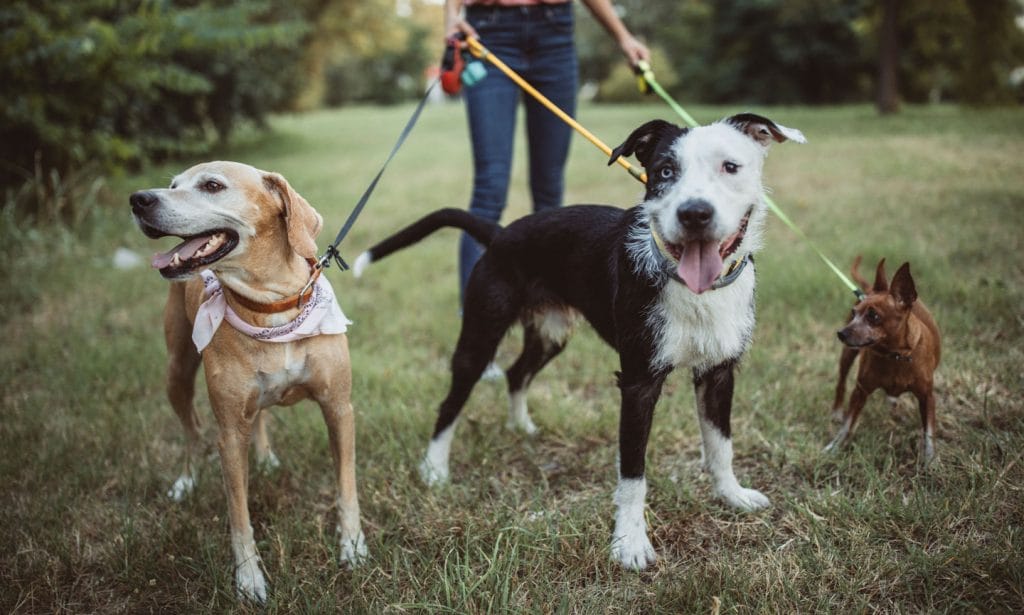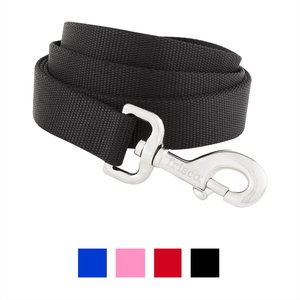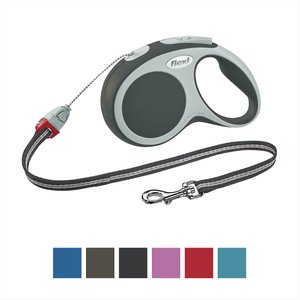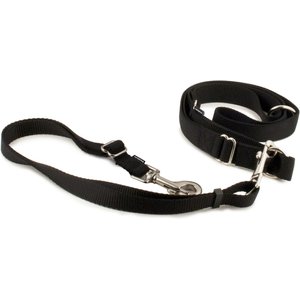Your dog’s leash is one of the most important dog supplies for your furry best friend. Surprised? It’s more than just a way to keep your dog close when you go for a walk.
The right dog leash gives your pup freedom to explore and make his mark on the world while keeping him safe. There are important considerations for him as well as for your end of the leash, like handle comfort and the ease of managing the leash length.
So how do you make the right choice for you and your dog?
To select the perfect dog leash, consider your canine’s size and temperament. For example, is he a 70-pound puller or a petite and polite walker? Think about where you go for walks, since a hike in the woods requires a different type of dog leash than when walking on a crowded sidewalk. For you, how does the handle feel when you hold it, how is the weight and maneuverability of the leash itself?
Below are six of the most commonly used dog leashes and their functions.
1. The Basic Dog Leash
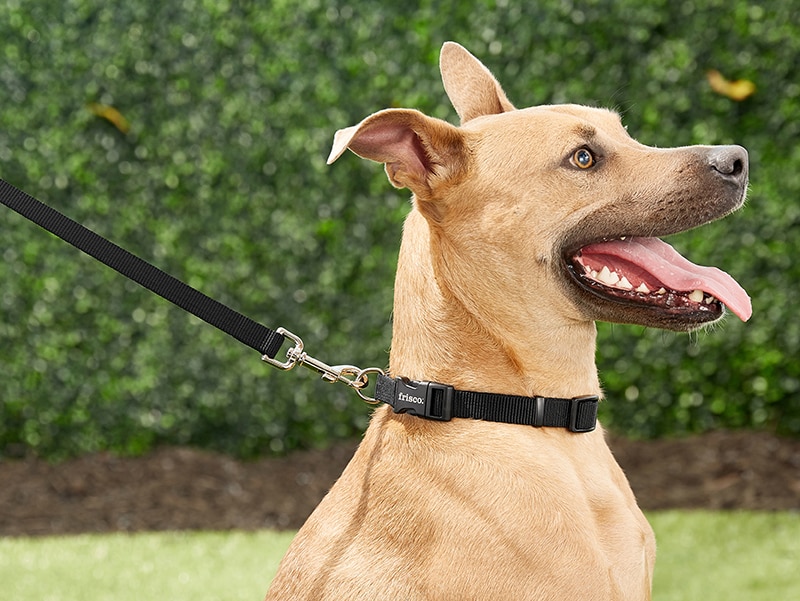
via Chewy.com
This classic leash is an all-purpose option for everyday walks.
Typically made of nylon or cotton web, a standard flat leash ranges 3-6 feet long. Most dogs do well with 4-6 feet for neighborhood strolls, as this gives pups room for safe exploration. Basic leashes are durable and easy to clean in the washing machine.
Consider the thickness of the leash and weight of the clasp when selecting a basic dog leash, because one size doesn’t necessarily fit all. The Frisco solid nylon dog leash, for example, comes in two lengths and several thicknesses, so there’s an option for every pup, from tiny to XXL.
2. The Retractable Dog Leash

iStock.com/darrya
Retractable leashes feature a thin, tension-loaded cord inside a plastic handle that’s controlled with a locking mechanism. Many pet parents appreciate the contoured handle and the freedom dogs have while on a retractable leash, with lengths ranging from 10 to over 20 feet. Because of the variable length, flexible leashes might give dogs more opportunity to exercise while on walks.
The Flexi Vario retractable dog leash, for example, is designed to be comfortable for human and canine walkers alike, with a soft, ergonomic handle and a smooth retraction system. The room to roam afforded by the leash’s flexible lengths allows dogs to dash and sniff during neighborhood walks.
Note: Retractable leashes require special safety considerations. Dogs walking close to a busy street might be at risk if you cannot engage the locking mechanism quickly.
Improperly used retractable leashes can cause rope burns and other injuries, and might present training challenges as dogs quickly may learn that pulling extends the lead. Always review the manufacturer’s safety suggestions to reduce the risk of injury.
3. The Hands-Free Dog Leash
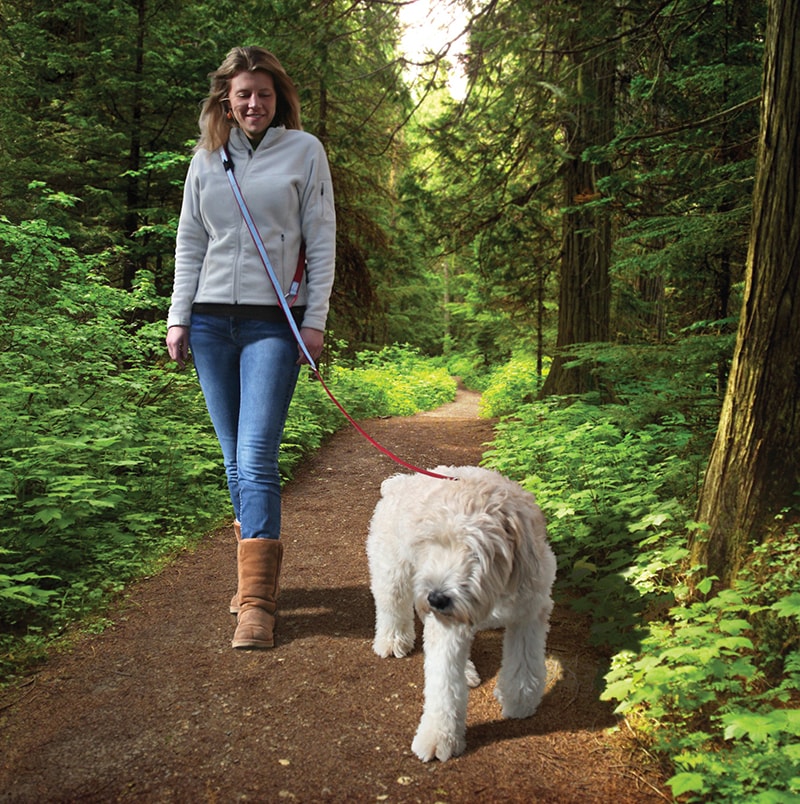
via Chewy.com
A hands-free dog leash is exactly what it sounds like: It connects your dog to you during walks without you needing to hold onto the leash. These nylon leashes typically fit around the waist, like the PetSafe hands-free dog leash, over the shoulder, or adjust to accommodate either option, like the Kurgo Quantum hands-free dog leash.
Since hands-free leashes rest closer to the walker’s center of gravity, they’re a great option for anyone concerned about holding onto a traditional leash. For example, runners might find them easier to use since they don’t have to modify their arm movements to accommodate holding a leash. They’re also a great option for people with babies or small children, since a hands-free dog leash enables pet parents to keep two hands on the stroller instead of trying to juggle the leash and stroller together.
Note: Pet parents dealing with physical limitations or dogs who outweigh them might not be a good fit for hands-free leashes, because they might get pulled.
4. The Double Dog Leash
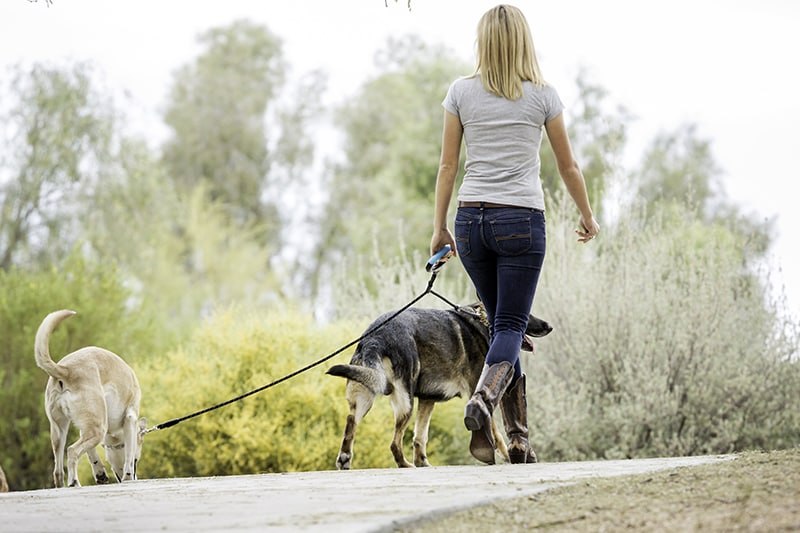
via chewy.com
Walking multiple pups often means tangled up leashes, dogs pulling in opposite directions and trying to juggle dogs and leads with one hand while doing clean-up with the other. Find relief with the double leash.
A double leash unites two leashes on a single handle, helping to make it easier to manage two dogs during walks. The double dog leash typically is made of nylon, rope or cotton web and is strong enough for even oversized dogs.
This leash is a great option for dogs going on familiar daily strolls. It’s best if both dogs are close in size and walking style, because the single handle requires tandem movement and cooperation. So, a double leash might not be a great fit if one canine walker likes to forge ahead and the other prefers to stop and sniff.
Because the pressure of two dogs is transferred to a single handle, comfort for your hand is critical. The Wigzi dual dog gel rope leash features an ergonomic gel handle designed to help reduce hand fatigue, as well as a spinning coupler to prevent leash tangles.
5. The Leather Dog Leash
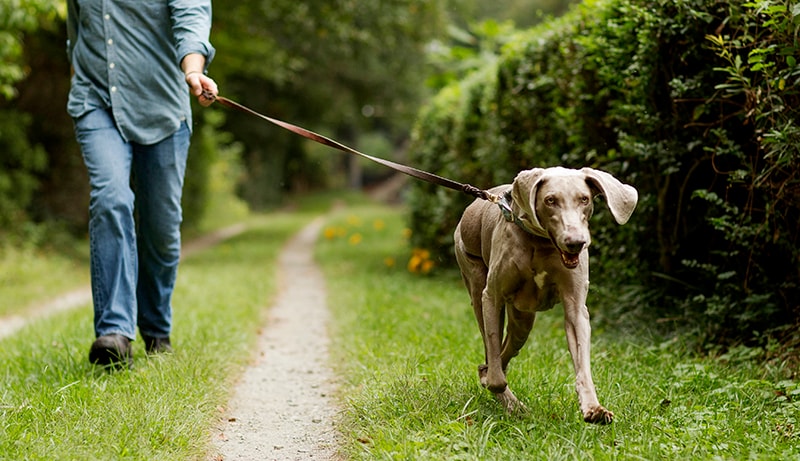
iStock.com/stevecoleimages
A leather leash marries classic style and durability. They’re ideal for dogs of all sizes and walking styles. They’re strong enough for dogs that pull, but not at the expense of the comfort of the pet parent or dog since they’re lightweight.
They typically range from 1-foot to standard 6-foot lengths. Leather leashes come in a variety of colors, from traditional brown and black to a rainbow assortment. These leashes often feature embellishments, like braiding near the clasp, and handle ends, like the Soft Touch braided two-tone leash.
Most leather leashes feel stiff at first and soften after a breaking-in period. While they’re great for dogs of all sizes and ages, many puppies can’t resist the flavor of leather, so wait to invest until your pup outgrows the teething phase!
Unlike cotton or nylon leashes, leather leashes require care to keep them in peak condition. Avoid getting them wet, and an annual cleaning and conditioning oil treatment will help them last much longer. A leather leash that’s gotten wet repeatedly without proper conditioning can snap in half from brittleness, so always inspect your leather leash for wear and tear to keep your dog safe.
6. The Long Dog Leash
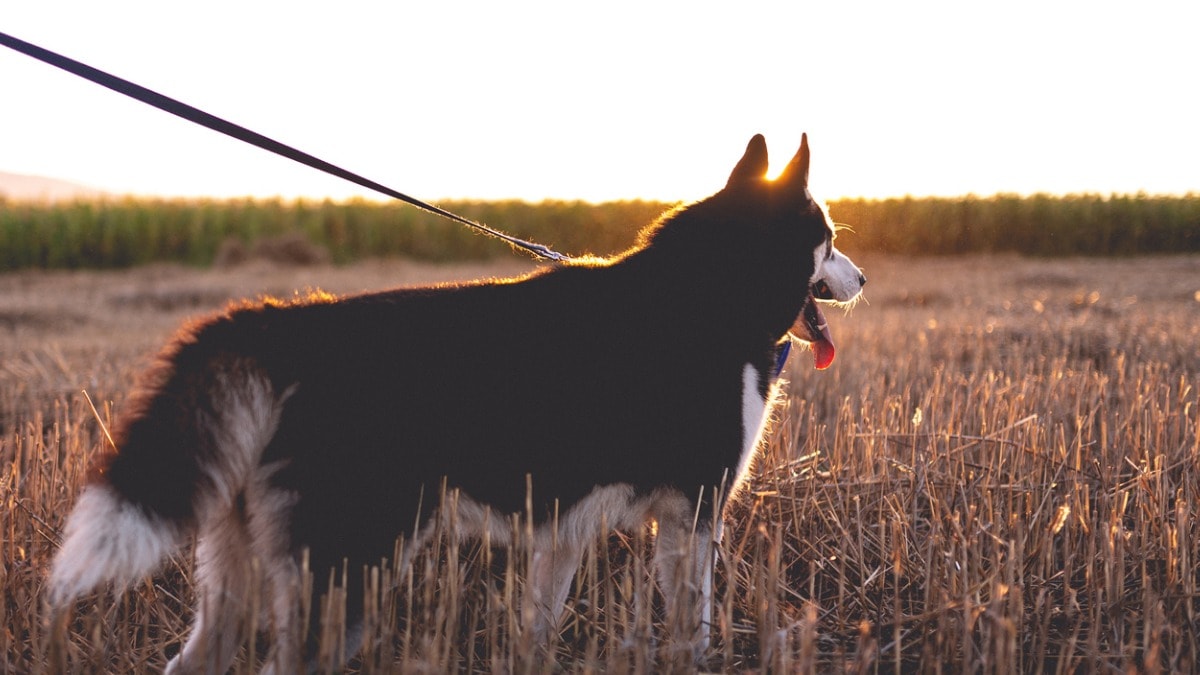
iStock.com/eclipse_image
This dog training leash is an option for working on distance behaviors, like outdoor obedience exercises. Long leashes live up to their name, extending as far out as 50 feet.
Made of flat cotton webbing or nylon rope, these leashes can help prep dogs for eventual off-leash work. They help keep your dog safe while giving him room to make choices.
Pet parents can use a basic dog training leash, like the Four Paws cotton web lead, to work on coming when called and distance stays. Long-line leashes also perform double duty for hiking dogs in need more of freedom to explore trails with leash laws.
While long leashes are great for training and hiking, the additional length can be challenging on the average walk around the block. Trying to manage an extra-long leash and a poop bag while focusing on your dog’s safety can feel like puppeteering, so stick with a standard 6-foot leash for those neighborhood walks.
Finding the perfect walking option for both ends of the leash takes time, but it’s a worthwhile effort. The humble leash is your lifeline when you and your pet are out in the world together, so choose wisely and you’ll enjoy many happy strolls together.

Victoria Schade has been a dog trainer and writer for over seventeen years. Her dog duties have included working on Animal Planet’s Puppy Bowl as the lead animal wrangler, appearing on two seasons of the Animal Planet show Faithful Friends, creating dog training content and appearing in videos for a variety of sources, and writing two dog training books, Bonding With Your Dog and Secrets of a Dog Trainer.
You can keep up with Victoria, Millie, the Smooth Brussels Griffon and Olive, the mixed breed dog, on her blog www.VictoriaSchade.com, on Twitter @VictoriaSchade or on Instagram, @LifeontheLeash.
Share:
